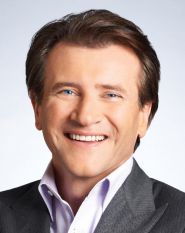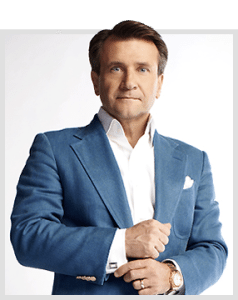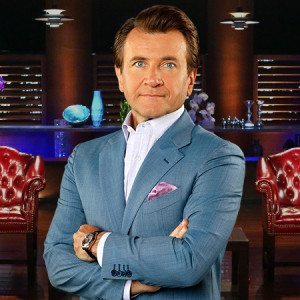Entrepreneurs
Why Robert Herjavec Is So Successful
Robert Herjavec started from the bottom and his worked his way to the top where he says he is ‘living the American Dream’.
Herjavec is a Croatian Born, Canadian businessman, TV personality, author and investor.
Robert Herjavec’s Early Life
 After being born in Croatia (formerly Yugoslavia) Herjavec’s family emigrated to Canada when he was eight years old. He really did start from the bottom when the Herjavec family arrived to Canada aboard the Cristoforo Colombo in 1970 with only one, solitary suitcase. The family finally made a base in the basement of a family friends house in Toronto.
After being born in Croatia (formerly Yugoslavia) Herjavec’s family emigrated to Canada when he was eight years old. He really did start from the bottom when the Herjavec family arrived to Canada aboard the Cristoforo Colombo in 1970 with only one, solitary suitcase. The family finally made a base in the basement of a family friends house in Toronto.
Herjavec obtained a degree in English Literature and Political Science from New College at the University of Toronto. In an effort to provide support to his mother and father, Herjavec took several low paid jobs including Newspaper delivery, waiting tables and working in retail.
Herjavec’s first career path was in film production, working in TV and Film as well as being the Field Producer for the Winter Olympics in Bosnia and Herzegovina where he was one of the youngest producers present.
Robert Herjavec’s estimated net worth is $100 Million.
Robert Herjavec’s Business Career
 When Herjavec found himself in between production gigs he would always be looking for extra work. He became aware of an opening at Logiquest, a computer startup selling IBM mainframe emulation boards. Herjavec had to talk his way into getting the job because he was under-qualified for the position. He did this by offering to work for six months for free to prove his worth. To be able to make his rent during this period Herjavec worked evenings as a waiter.
When Herjavec found himself in between production gigs he would always be looking for extra work. He became aware of an opening at Logiquest, a computer startup selling IBM mainframe emulation boards. Herjavec had to talk his way into getting the job because he was under-qualified for the position. He did this by offering to work for six months for free to prove his worth. To be able to make his rent during this period Herjavec worked evenings as a waiter.
After successfully earning the right to work full-time at Logiquest, Herjavec eventually became General Manager and left to found BRAK Systems, an Integrator of security software in the year 2000. He ran this business from the basement of his home and built it up to a point where it was sold to AT&T for $100 Million.
“What is great about entrepreneurship is that entrepreneurs create the tangible from the intangible.” – Robert Herjavec
After the sale of BRAK Systems, Herjavec took three years off to focus on bringing up his three children. Then, in 2003, he founded the Herjavec Group, a security solutions integrator, reseller and managed service provider. The company has become one of Canada’s fastest growing tech companies, moving from 3 employees to 150 employees in ten years. The Group’s sales in 2003 were $400,000, rising to more than $120 Million in less than a decade. These achievements mean that the Herjavec Group has been recognised with many awards Nationally and Internationally.
Robert Herjavec The TV Personality
 Herjavec has played a starring role in two versions of Dragons’ Den, one in Canada and the USA version called Shark Tank. Both shows feature budding entrepreneurs pitching for investment in their business. The Canadian version proved to be one of most watched, highest rated shows in the country and the USA version has estimated viewing figures in excess of 7 Million people. Herjavec continues to build his personal brand through multiple TV appearances varying from The Queen Latifah Show, to Entertainment Tonight to MTV Cribs.
Herjavec has played a starring role in two versions of Dragons’ Den, one in Canada and the USA version called Shark Tank. Both shows feature budding entrepreneurs pitching for investment in their business. The Canadian version proved to be one of most watched, highest rated shows in the country and the USA version has estimated viewing figures in excess of 7 Million people. Herjavec continues to build his personal brand through multiple TV appearances varying from The Queen Latifah Show, to Entertainment Tonight to MTV Cribs.
Robert Herjavec The Author
Herjavec has written two best-selling books; Driven: How to Succeed in Business and Life &The Will to Win: Leading, Competing, Succeeding. In his first book, Driven, he outlines the business and life principles that made him successful. His second book, The Will To Win, offers life lessons that aim to guide the reader to a life of greater success and happiness.
“Successful businesspeople retain a quality most others not only lack but often fail to comprehend, and that’s the unrelenting drive to convert a vision into reality. They are driven to realize this goal in a manner that appears to defy logic among others who lack this drive.” – Robert Herjavec
Robert Herjavec’s Advice
http://www.youtube.com/watch?v=Zo1VGEtHzK0
Conclusion
Robert Herjavec has a true rags to riches story that can inspire all of us. It is clear that he was prepared to work as much and as hard as possible to get to where he wanted to be in life. From humble beginnings he has been able to create a nine figure net worth.
Ask yourself, what could you achieve if you prepared to put in the necessary work?
Change Your Mindset
The Silent Skill That Makes People Respect You Instantly
What truly earns respect and why most people go about it the wrong way

Everybody craves respect but not everyone earns it. Some people believe that a title, years of experience, or a position of authority automatically entitles them to respect. (more…)
Entrepreneurs
The Essential Skills Every Entrepreneur Needs In 2026
Success in the digital age isn’t about luck. It’s about mastering the skills that separate dreamers from doers.

When I was 22 years old, I started my first side hustle as a ghostwriter. (more…)
Business
The Hidden Money Pit in Your Operations (and How to Use It)
See how smart asset management software is quietly saving businesses thousands in wasted time, stock, and maintenance.

Trimming unnecessary expenses and minimizing resources is a general practice in running a business effectively. Asset management software can help you achieve those goals. (more…)
Business
Thinking of Buying A Business? These 6 Sectors Quietly Produce the Best Deals
Before you buy your next venture, check out the sectors where successful businesses are changing hands every day.

All entrepreneurs have a desire to be the masters behind a successful venture. Buying an established business is a great choice for many. This provides instant access to an established market with existing infrastructure and clients. (more…)
-

 Entrepreneurs4 weeks ago
Entrepreneurs4 weeks agoThe Essential Skills Every Entrepreneur Needs In 2026
-

 Change Your Mindset3 weeks ago
Change Your Mindset3 weeks agoHow to Turn Your Mind Into Your Greatest Asset (Instead of Your Enemy)
-

 Change Your Mindset3 weeks ago
Change Your Mindset3 weeks agoThe Silent Skill That Makes People Respect You Instantly
-

 Life2 weeks ago
Life2 weeks ago10 Research-Backed Steps to Create Real Change This New Year
-

 Tech2 weeks ago
Tech2 weeks agoWhat’s in a Name? How to Get Your Domain Right
-

 Did You Know2 weeks ago
Did You Know2 weeks agoHow Skilled Migrants Are Building Successful Careers After Moving Countries

























3 Comments